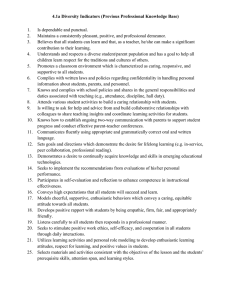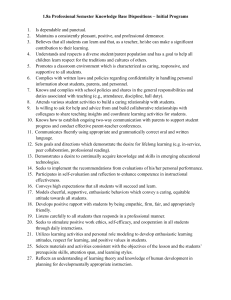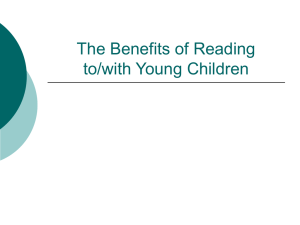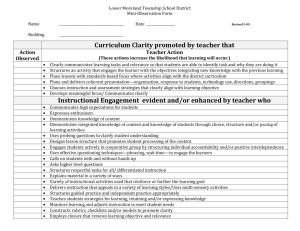Diversity Indicators (Current Professional Knowledge Base)
advertisement
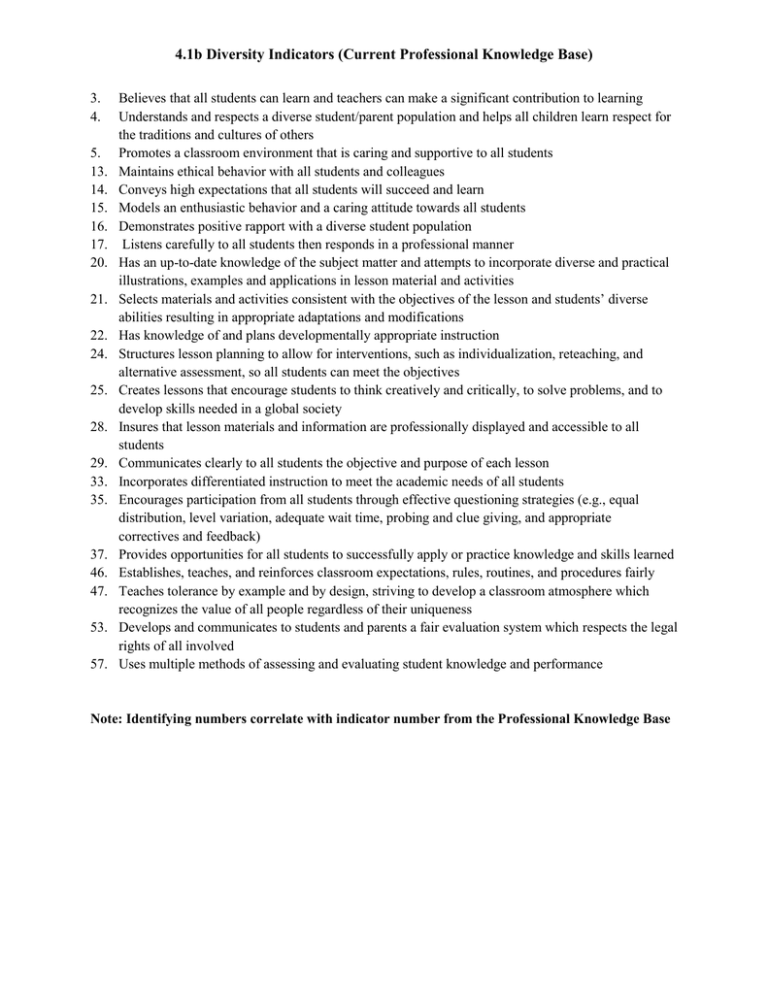
4.1b Diversity Indicators (Current Professional Knowledge Base) 3. 4. 5. 13. 14. 15. 16. 17. 20. 21. 22. 24. 25. 28. 29. 33. 35. 37. 46. 47. 53. 57. Believes that all students can learn and teachers can make a significant contribution to learning Understands and respects a diverse student/parent population and helps all children learn respect for the traditions and cultures of others Promotes a classroom environment that is caring and supportive to all students Maintains ethical behavior with all students and colleagues Conveys high expectations that all students will succeed and learn Models an enthusiastic behavior and a caring attitude towards all students Demonstrates positive rapport with a diverse student population Listens carefully to all students then responds in a professional manner Has an up-to-date knowledge of the subject matter and attempts to incorporate diverse and practical illustrations, examples and applications in lesson material and activities Selects materials and activities consistent with the objectives of the lesson and students’ diverse abilities resulting in appropriate adaptations and modifications Has knowledge of and plans developmentally appropriate instruction Structures lesson planning to allow for interventions, such as individualization, reteaching, and alternative assessment, so all students can meet the objectives Creates lessons that encourage students to think creatively and critically, to solve problems, and to develop skills needed in a global society Insures that lesson materials and information are professionally displayed and accessible to all students Communicates clearly to all students the objective and purpose of each lesson Incorporates differentiated instruction to meet the academic needs of all students Encourages participation from all students through effective questioning strategies (e.g., equal distribution, level variation, adequate wait time, probing and clue giving, and appropriate correctives and feedback) Provides opportunities for all students to successfully apply or practice knowledge and skills learned Establishes, teaches, and reinforces classroom expectations, rules, routines, and procedures fairly Teaches tolerance by example and by design, striving to develop a classroom atmosphere which recognizes the value of all people regardless of their uniqueness Develops and communicates to students and parents a fair evaluation system which respects the legal rights of all involved Uses multiple methods of assessing and evaluating student knowledge and performance Note: Identifying numbers correlate with indicator number from the Professional Knowledge Base
